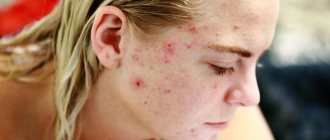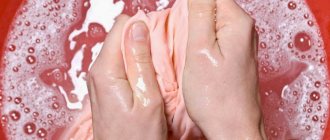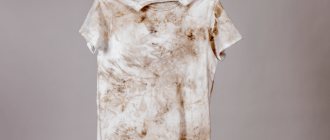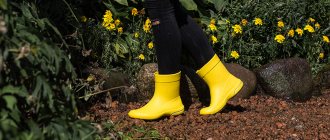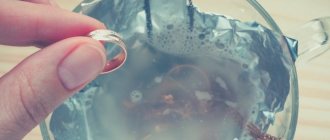The situation happens when something necessary and suitable is found among long-forgotten things. The question arises: why is she not in the “main team”? And only after examining the find more closely, you realize that an annoying stain that was not washed off once ruined everything. It’s a pity to throw it away, and it was impossible to get rid of the pollution. But you can try to remove even an old stain; it is only important to know what exactly it is from.
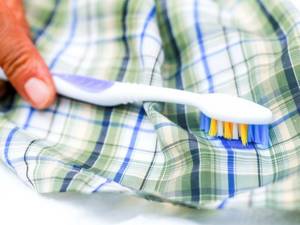
Stains of different origins require different removal methods.
And then, when you use the right remedy, you can fix everything. We will try to describe below how to remove old stains from clothes, and most importantly, how to use them.
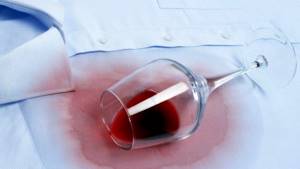
Wine stain
Putting things damaged by stains in the closet is a common thing. You don’t want to lose your white blouse or blouse, nor do you want to bother with the stain. What kind of contaminants most often cannot be dealt with immediately:
- fat;
- blood;
- from paint;
- ink;
- from sweat.
Their difficult-to-decipher status is mostly a myth. You just need to put in some effort!
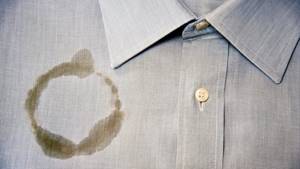
Grease stain on a shirt
Grease and oil stains
There are, of course, many branded chemicals that can be used to get rid of troubles, but they are not cheap, and they give the exact opposite result. Therefore, it is better to use folk remedies that are not so radical and expensive. For example, you can grate raw potatoes, apply it to the stain for a while, and then wipe the area with gasoline if traces of fat still remain.
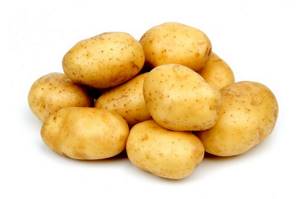
You can remove a greasy stain using raw potatoes.
For another remedy, you will need grated soap, turpentine and ammonia, taken in equal proportions. Mix the products and apply to the stain. After 15 minutes, the problem of how to remove old greasy stains from clothes will cease to interest you because the latter have disappeared without a trace. If the stains still “resist”, we will use the most labor-intensive method. Let's prepare gasoline or turpentine for it (but only purified). We wet the stain with plain water, place a napkin soaked in turpentine under the stain, and begin to wipe the stain itself with gasoline. If the cloth gets dirty quickly, replace it with a clean one. Finally, rinse the stain with water and dry the item.
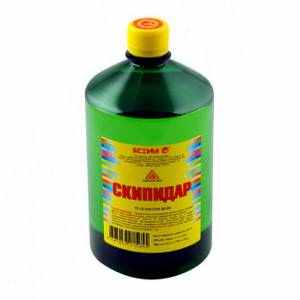
For another product you will need grated soap, turpentine and ammonia
What to buy at the grocery store?
You can remove glue from clothes using special factory-made preparations, which are not difficult to buy. The most effective:
- "Super ANTICKLE MOMENT." A universal product that easily and quickly removes adhesive traces of any etiology. The drug contains acetone, so you need to use it carefully and test the tissue’s reaction to the substance before starting the procedure.
- "HG" product. A product designed to remove overhead labels, branded labels and traces of fabric accessories (rhinestones, stickers). It has a rather aggressive composition that can damage the color and structure of the fabric.
- "ZM Glue Cleaner". Factory release - spray. The composition has a gentle form and the drug can be used for all types and colors of fabric products.
Return to contents
Blood stains
When blood gets on your clothes, the last thing you think about is removing it, because blood is always a consequence of an extreme situation. But you can get rid of blood very well after some time. First, let's try using just water and salt (1 tablespoon per liter).
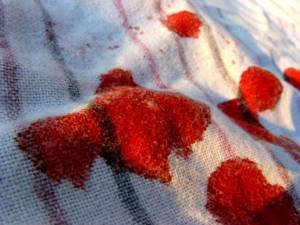
Blood stains
On a note! It is very important not to change the proportions here, that is, more salt can ruin everything.
Dissolve the salt in water, apply the mixture to the stain, and leave the item to soak overnight. In the morning we just wash as usual. You can also use a purchased product, which does a good job, but it is not always possible to purchase it.
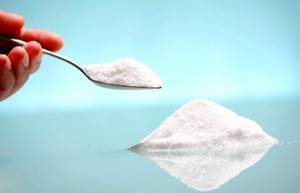
You can get rid of blood stains using a saline solution.
If salt and other attempts do not lead to results, we can use a radical method using hydrogen peroxide. But be prepared for the fact that after applying peroxide, the stain may become an equally unpleasant... hole. That is, this method is quite risky! Still want to figure out how to remove old blood stains from clothes using peroxide? Then let's get started. Simply rub the product into the stain with a cotton swab until it disappears completely. This method will definitely work, but it may end in tissue destruction. It is important to prepare for this in advance and not to rub the item, i.e. do not miss the moment of hole formation.
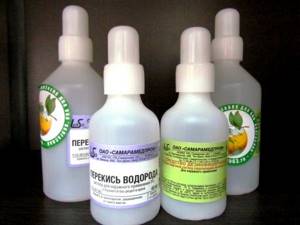
Hydrogen peroxide - a radical remedy for blood stains
How to remove using folk remedies?
Useful means can help you cope with the smell. You can disinfect fabric using turpentine and clay.
Mode of application:
- a cotton swab is moistened with turpentine;
- pass it over a spot that emits an odor;
- cover the treated area with clay and press it with your palm;
- a white paper napkin is placed on top and ironed;
- After treatment, the item is washed as usual.
This method is effective when there is a small odorous stain on the product. If the smell comes from the item as a whole, use soda.
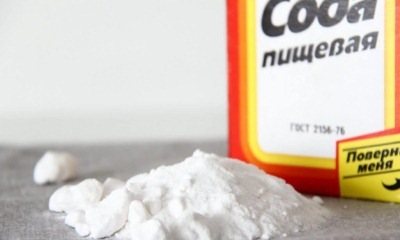
Mode of application:
- Dissolve 0.5 cups of soda in two glasses of warm water.
- Pour the resulting solution into a basin with 3 liters of clean water, bring it to the desired temperature.
- Soak the product for several hours. If the smell is strong, leave the item overnight.
- Wash clothes as usual.
Baking soda can be used for machine washing. It is poured into the compartment with the powder in the amount of 2 tablespoons.
You can deal with foreign odors using a vinegar solution. It not only stops odors, but also fights bacteria.
Procedure:
- add 1 glass of table vinegar to a basin with 5 liters of water;
- soak things for an hour;
- wash according to the information on the label;
- rinse clothes in acidified water - to prepare a homemade conditioner for 5 liters of water you will need ¼ cup of vinegar.
Hang things out to dry in fresh air. Don't worry about the sour aroma; it will quickly disappear even without additional processing.
Ammonia is an effective and inexpensive way to combat foreign odors.
Mode of application:
- Dissolve a tablespoon of ammonia in 5 liters of water.
- Soak the item for half an hour.
- Wash it as usual.
Since ammonia has a pungent odor, you need to work with it in a respirator or in a room with good ventilation.
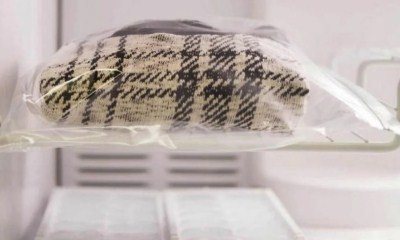
The fastest and least labor-intensive way to deal with foreign odors is freezing.
Procedure:
- smelling things are wrapped in cellophane and the bag is tightly tied;
- put the product in the freezer for an hour; if you have time, you can leave it overnight;
- remove clothes and ventilate them in the fresh air.
This method allows you to cope with odors that are organic in nature. In winter, things can be hung on the balcony.
Paint and ink
Many people believe that paint and ink cannot be removed in principle, and... they throw it away or put the item in the closet until better times. However, these stains are best removed when they are still fresh. If some time has passed, you should not give up. There are also folk remedies for these spots. To remove stubborn, old paint, prepare:
- knife or razor;
- petrol;
- turpentine;
- alcohol;
- oil;
- cotton wool;
- soda
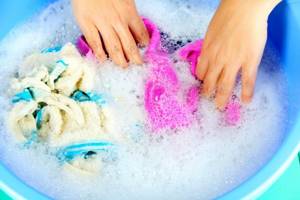
All remedies will not be needed right away. It’s just that if one solvent doesn’t work, we’ll test the others one by one. First, scrape off the top layer of paint with a knife, doing it carefully, avoiding holes. Next, we begin to rub in the solvent on a cotton swab, which needs to be changed as it gets dirty. When the stain disappears, the area should be treated with a soda solution. At the end, you need to wash the item (separately from the others) and hang it for airing to get rid of the smell of the product.
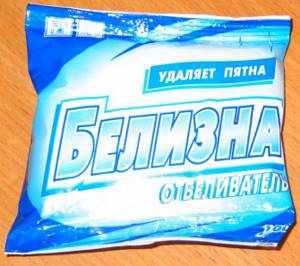
Bleach for removing stains
If you are wondering how to remove old ink stains from clothes, you can use a branded stain remover or take the item to dry cleaning. Fans of folk remedies should prepare... simple bleach and a cotton swab. We moisten the cotton wool with the product (but not too much, just lightly) and begin to rub it into the stain, often changing tampons. At the end, when there is no trace of ink left, we wash the item as usual.
HOW TO REMOVE PAINT STAINS FROM CLOTHES. HOW TO REMOVE PAINT STAINS FROM CLOTHES.
If at least once in your life you have had the opportunity to sit comfortably on a freshly painted bench in the park and, against the backdrop of birdsong, suddenly realize with horror that behind you is now striped and, most likely, green, then this article is for you. Or if you are doing renovations right now and accidentally drip paint on yourself, then don’t pass by either. And if you are a happy mother of a child who has mastered finger paints perfectly, and then mastered a sofa, a cat and a Persian carpet, then you definitely need to read this article to the very end.
Right now you will learn the 11 most effective ways to get rid of paint stains!
Method one - turpentine, kerosene or acetone
As you correctly guessed from the name, you will need turpentine, kerosene, acetone and ammonia (you can buy it at any pharmacy). To remove a paint stain, first moisten it with turpentine, kerosene or acetone, and then rub it with a cotton pad soaked in ammonia until the stain completely disappears.
Important!
Before removing a stain, make it a rule to check on an inconspicuous area of the fabric how all these liquids act on it. It will not be very pleasant if it suddenly fades or some other irreversible changes occur to it.
Method two - for old stains
Turpentine and ordinary baking soda, which you can easily find in any grocery store, will help remove old paint stains. Moisten the paint stain with turpentine, and then clean it with a soda solution and rinse in warm water. This is how you can easily and effectively remove an old paint stain, try it!
Method three - water-based paint
A vinegar solution works great for stains from water-based paint.
Recipe:
Mix vinegar and water in equal proportions.
To remove a stain, take a cotton pad or cloth, soak it in the resulting solution and rub the stained area. The stain should disappear right before your eyes.
Method four - latex and acrylic paint
You'll have to work hard here. To remove stains from these types of paints, you will need an arsenal of different tools and tools: a toothbrush, stain remover (or bleach), laundry detergent and water.
Step 1.
First, turn the clothes inside out and wet them generously with cold water, then wring them out and machine wash them on the longest program at 30 degrees.
Step 2.
If the stain does not disappear, repeat the procedure a second time.
Step 3.
If this time the stain remains in place, then sprinkle it with tooth powder and try to remove it with a toothbrush in a circular motion (for these purposes, of course, it is better to take an old brush that no one needs). Rinse off the remaining powder with hot water and wash the item again, this time at the highest possible temperature (check the tag).
Step 4.
If all this does not help, then feel free to move on to the big guns - stain remover or bleach.
Method five - alkyd enamel
The main enemy of alkyd enamel stains is white spirit, which can be purchased at any hardware store. Turn the item inside out, soak a cotton swab in white spirit and treat the stain. If the fabric is very delicate and capricious, then be sure to place paper towels or white napkins before processing to reduce the aggressiveness of the product. Then put the item in the wash or wash it by hand using laundry soap. The washing step is mandatory here, because you are unlikely to like the scent of white spirit.
Method six - oil paint
Oil paint stains take first place in the list of the most unpleasant and difficult to remove. Therefore, if you do sit on a painted bench, but the item is dear to you and the newly acquired stripes do not paint it at all, then it is better to go to a dry cleaner, where professionals will take care of the stains.
Important!
Everything depends on the speed of reaction. Dry cleaning can only help you for 3-5 days, while the stain is fresh. If you didn’t have time, then most likely you will have to throw the item away or put up with the stripes.
But while the stain is fresh, before you run to the dry cleaner, try the old time-tested method. Pour liquid soap generously directly onto the stain, wait until it is absorbed, then take a cloth and try to gently wipe it off, then rinse in cold water.
The whole truth about turpentine and oil paint stains
If you treat the stain with a sponge dipped in turpentine, the paint itself will disappear, but, alas, it will leave a greasy stain
.
Method seven – for wool, synthetics and cashmere
All the methods listed above are very effective, but are completely unsuitable for fabrics such as wool, synthetics and cashmere. Powerful solvents are certain death for them; the fabric itself can disappear along with the stain. Therefore, a more delicate approach is required here. Soak a cotton swab in any vegetable oil and remove the stain in a circular motion. As the tampon becomes dirty, it must be changed. After all manipulations, wash and dry the item as usual. Most likely the stain will disappear.
Method eight - acetone
You don't have to buy acetone to remove paint stains. Classic nail polish remover is perfect, as it contains it in abundance, and you probably have the liquid itself at home. Soak a cotton swab in it and treat the stain until it disappears. Then wash the item as usual.
Important!
Acetone, like any other solvent, is a very aggressive substance. Therefore, before removing a stain, check the effect of acetone on an inconspicuous area of the fabric, so that the situation does not arise that there is no stain and no color of the fabric.
Method nine - stain removers
Antipyatin soap is a real hit among stain removers. If the paint stain is not strong and fresh, then it will completely help to cope with it. But be careful, check that the soap does not corrode the paint of the fabric itself.
There are also a huge number of different special stain removers that you can easily find in any hardware department. For example, there are many good reviews about Amway stain remover. If the stain remover does not work immediately, try leaving it overnight and only washing the item in the morning. And this procedure must be repeated until the bitter end. Very often, stains are not removed the first time, but after a couple of attempts they disappear without a trace, so never despair right away.
Method ten - hot
It happens that regular washing works well with paint stains, but at fairly high temperatures - at least 60 degrees. But before you try this method, be sure to check the label on the clothing to find out if it can be washed at such a high temperature.
Method eleven - watercolor and gouache
If there is a gouache stain on your clothes, then it is important not to wait until the paint has completely dried, but, as soon as you see the stain, remove it immediately, then apply a dry stain remover to it and wet it with cold water. After all these manipulations, add washing powder and wash the item as usual.
A watercolor stain just needs to be rinsed under running cold water or soaked in powder and then simply washed.
We are sure that now you are a real expert when it comes to removing paint stains from clothes. But, nevertheless, it is better not to sit on painted benches, no matter how invitingly they sparkle with fresh green paint and no matter how peacefully the birds sing.
Old stains and white clothes
It is impossible to imagine a more unfortunate combination. But effective methods of struggle exist here too.
Important! However, there is no need to immediately grab a solvent or bleach: the whole difficulty lies in the visibility of the stain on the white surface.
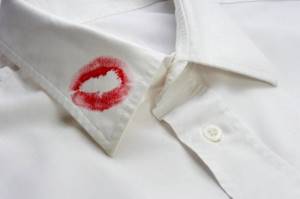
Therefore, you should correctly determine its nature and act extremely carefully. Ordinary alcohol will help get rid of lipstick. If the stain is from cologne or perfume, you can use acetone. Fat can be easily removed with dry potato flour.
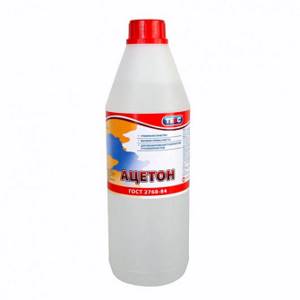
Acetone will remove perfume stains
First, place a paper towel under the stain, heat the flour, sprinkle it on the stain and leave the product alone for 20 minutes. Then shake off the flour. If the stain remains, repeat the procedure. Finally, we simply wash the item with a regular detergent.
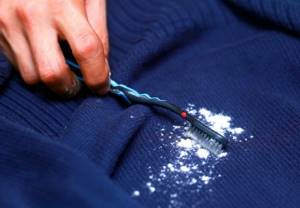
Fat can be easily removed with dry potato flour.
How to remove an old stain from white clothes if it is... tar? Use a knife or other sharp object to remove the top layer. Next, heat the milk and put part of the item with the stain in there for 60 minutes. Then we take it out and wash it in cold water with regular powder. If there is old dirt of unknown origin on the item, you can try to get rid of it with acetone.
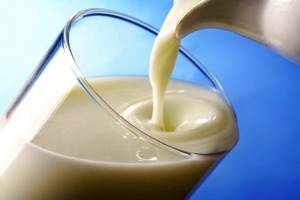
To remove tar you will need milk
Some useful recommendations
Removing grease stains from clothes is a troublesome task. There is always a risk of completely ruining the item. Therefore, before starting the procedure, it is better to get acquainted with some general recommendations.
The rules for removing grease stains are as follows:
- Before using grease removers, you need to clean the stain of other contaminants. To do this, first brush the area with a dry brush, then with a damp one. All these manipulations are best done from the wrong side.
- If you have already decided how to remove the stain, then it is better to try this product on a small, inconspicuous area. In this case, you will understand how the chosen option affects the fabric.
Video: How to remove grease stains from clothes? Experiment.
Many housewives have this problem. “I washed the clothes with the grease stain in the machine, but it didn’t go away.” You can't do this without pre-processing. Only after you have used the grease remover should you put the item in the washing machine. If you ignore this, it will be much more difficult to remove dirt after washing.
- If you start rubbing the stain, streaks may remain. To avoid this, first treat the edges of the contaminated area. Then gradually move towards the center of the greasy spot
- If you need to remove dirt on things made of suede or nubuck, you should use only dry cleaning
- Under no circumstances should you leave the solution to the stain problem until later. The more time passes, the more difficult it will be to remove fat from the tissue. As a result, your pants or shirt will be completely unwearable.
- Many substances used to remove grease stains are quite toxic and aggressive. Therefore, precautions must be taken when using them.
First, cleaning clothes with ammonia, gasoline or other easily evaporated substances should be done in a well-ventilated area.
Secondly, after use, the container must be well closed and hidden so that children cannot get it.
Greasy stains are very difficult to remove. If the pollution is significant, then some folk remedies may not help.

In such a situation, you should purchase a special stain remover. If there is a dry cleaning service in your city, you can use its services. But here it is worth stocking up with sufficient funds. Dry cleaning services can be quite expensive, but there will be no stains or traces left.
Traces of sweat
The physiology of the human body suggests that the armpits, as well as the back of many white clothes, “suffer” from traces of yellow. Many people immediately rush to remove them using factory-made stain removers. But the result is not always the one expected. Therefore, things with yellowed armpits are often sent to the closet. Getting rid of them over time, of course, is much more difficult. But this is possible if you use some of the products available in every home medicine cabinet, just around the house.

Sweat stains on clothes are quite difficult to get rid of.
So, to remove old yellow stains from white clothes, prepare:
- peroxide;
- aspirin;
- "dry fuel".
Three means - three methods. Let's look at them one by one.

Aspirin is one of the remedies for sweat stains
First, soak the stain in soapy water, and then apply peroxide to the yellow areas. An obvious hiss should make you happy: the product has started working, the desired reaction has begun. After the stain disappears, the item is washed as usual. If you choose aspirin, you need to dissolve 2 tablets in at least water. Apply aspirin to the stain (pre-soak the product again) and leave the thing for 2-3 hours (sometimes it takes more time). Then we wash it, rinsing it thoroughly. You can replace aspirin with “dry fuel” and proceed according to the method described above.

A mixture of baking soda, hydrogen peroxide and Fairy will help get rid of the stain.
You can use another composition. Mix 1 tbsp. a spoonful of soda, hydrogen peroxide, and any dishwashing detergent (preferably Fairy). The composition is rubbed into the stain with a brush, the item is left for a couple of hours, then thoroughly washed and rinsed. If necessary, repeat the method twice.

It's not so simple with children's clothes
How to remove oil stains from skin
Leather is a material whose structure can be damaged during the cleaning process. Colored skin is cleaned with lemon juice or an onion cut in half. Onion or lemon juice breaks down small particles of fat. First, the liquid is applied pointwise, then the residue is wiped off with a napkin. The procedure is repeated several times in a row.
To remove greasy marks from the surface of dark skin, wipe the areas with a cotton pad soaked in nail polish remover. Acetone, which is present in most products, actively dissolves fat.
To clean the skin, use wipes for laptop displays or TV screens. The composition with which the wipes are impregnated can effectively clean the material without damaging it.
Old stains and baby clothes
With children's clothing, not everything is so simple, because not all products (especially household chemicals) are safe for the health of children. For this reason, we immediately discard industrial chemicals. If natural remedies also cannot be used for some reason, you can use gel formulations containing enzymes. They are of plant origin, so they will be safe for children. However, even these gels may not remove the stain the first time.
Important! When figuring out how to remove old stains from children's clothing, you should remember: you should not wash clothes of adults and children together.

, even if the stains on the clothes are of the same origin. You should also strictly maintain the temperature regime, as this will prevent the development of some harmful microorganisms. Otherwise, we proceed as usual, using the above-described remedies according to the nature of the stain. True, children's clothes should be rinsed more thoroughly to eliminate the slightest residue of even a natural product!
What do you think about it?
Leave a comment, your opinion is important to us

